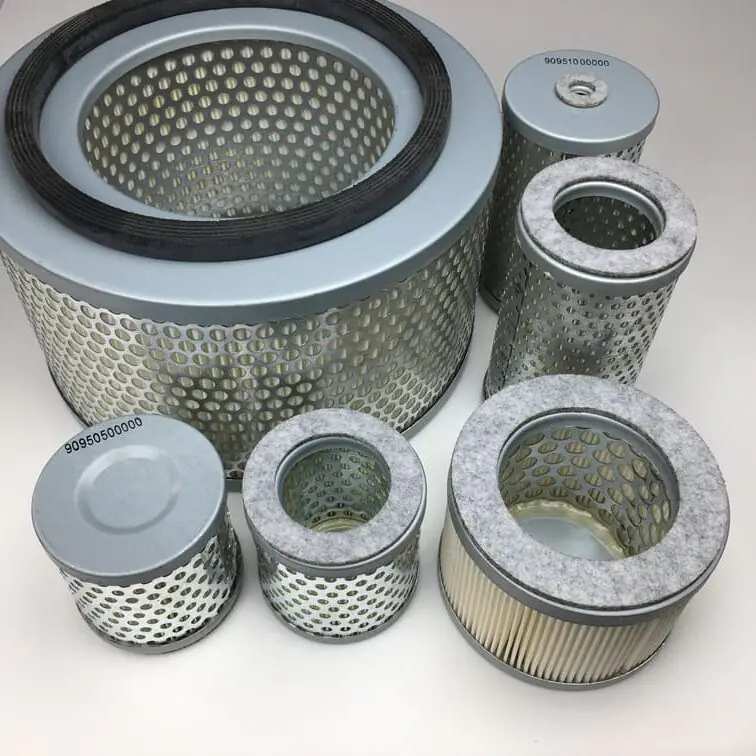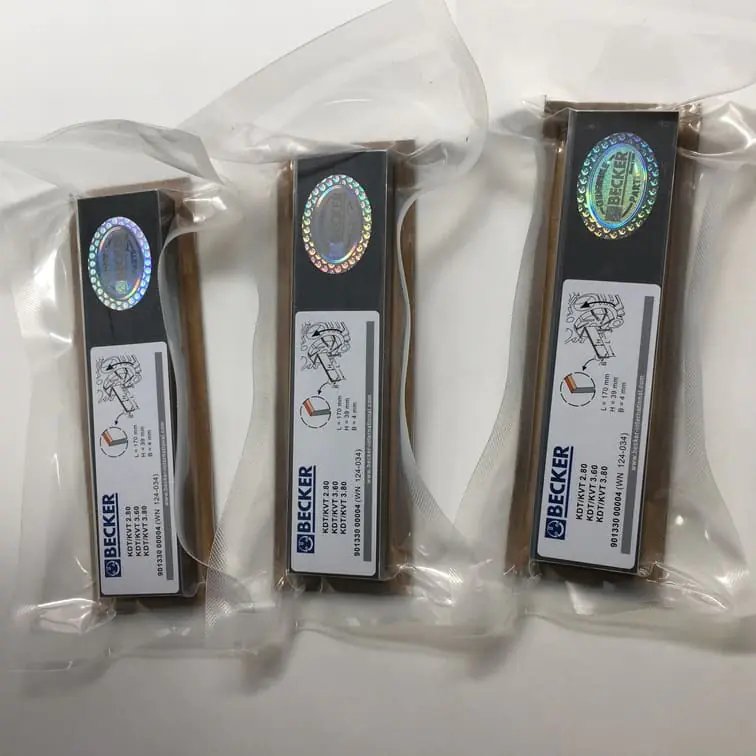What Does the Brake Vacuum Pump Do?
The brake vacuum pump is a critical component in modern automotive braking systems. It ensures that drivers can stop their vehicles efficiently and safely by generating the vacuum pressure needed to power the brake booster. Without the vacuum pump functioning correctly, the braking system might become inefficient, requiring the driver to exert significant force to bring the car to a halt. This article will explore what a brake vacuum pump does, how it works, common issues, and why it is important for your vehicle.
How Does a Brake Vacuum Pump Work?
The brake vacuum pump is typically used in vehicles equipped with a brake booster to assist in braking. This system essentially amplifies the force applied by the driver to the brake pedal, making braking easier and more effective.
When the driver presses down on the brake pedal, the brake booster receives vacuum assistance generated by the pump. This vacuum enables the booster to use atmospheric pressure to push against the diaphragm inside, making it easier for the driver to stop the vehicle. The vacuum pump itself is generally powered either by the engine directly or by an electric motor, depending on the car model.
- Engine-Powered Pump: Traditional vehicles use the natural vacuum generated by the engine to power the pump, especially those with gasoline engines.
- Electric-Powered Pump: In newer cars, especially those using diesel engines or hybrid technology, an electric vacuum pump is often utilized to create the required vacuum.
The vacuum generated by the brake pump is crucial to maintaining effective stopping power, especially in situations requiring quick responses, such as emergency braking.
Why Is a Brake Vacuum Pump Essential?
The brake vacuum pump plays an integral role in maintaining the safety and comfort of your driving experience. Below are the key reasons why this component is essential:
1. Ensures Sufficient Braking Power
Without a properly functioning vacuum pump, your brake booster would not be able to receive the vacuum pressure it needs. This lack of pressure means that the brakes would become harder to press, leading to increased stopping distances and potentially unsafe driving conditions.
2. Supports Modern Safety Features
Many modern vehicles come with power brakes and other advanced features like anti-lock braking systems (ABS). The vacuum pump provides the necessary force to ensure that these systems function optimally, offering the driver a smoother and safer braking experience.
3. Efficient Engine Operation
A failing brake vacuum pump can lead to engine inefficiency. Since the pump is often connected to the engine system, a malfunction can result in poor fuel consumption, increased emissions, and even engine damage.
“A faulty brake vacuum pump could not only compromise your safety but also negatively impact your vehicle’s overall performance.”
Maintaining a healthy vacuum pump ensures both your safety and the longevity of your car.
Common Issues with Brake Vacuum Pumps
Even though brake vacuum pumps are built to be reliable, like any other mechanical component, they can develop problems over time. Here are some of the most common issues faced by drivers:
1. Loss of Vacuum Pressure
A loss of vacuum pressure is a common issue with brake vacuum pumps. This can be due to a leak in the system or a faulty pump motor. When vacuum pressure is lost, the brake booster cannot function properly, making it challenging to stop the vehicle.
Solution: Inspect all vacuum lines for leaks, and consider replacing the vacuum pump if the loss of pressure persists.
2. Noisy Operation
If you hear loud or unusual noises coming from the vacuum pump, it could indicate worn-out internal components or a blockage in the system. Bearings, which help the pump run smoothly, can also wear out over time, causing noise and reduced efficiency.
Solution: Lubricate or replace bearings as needed. If noise continues, it may be time to replace the entire pump.
3. Brake Pedal Becomes Hard
If you notice that the brake pedal becomes hard to press, it is an indicator of insufficient vacuum being supplied by the brake booster. This might be due to a malfunctioning vacuum pump, an air leak, or a clogged hose.
Solution: Check the hose connections and the booster vacuum pump. Replacing a faulty vacuum pump is the best course of action if it is not providing enough vacuum.
Table: Common Brake Vacuum Pump Issues and Solutions
| Issue | Possible Cause | Solution |
|---|---|---|
| Loss of vacuum pressure | Leak or faulty pump motor | Check for leaks, replace pump |
| Noisy operation | Worn bearings or blockage | Lubricate or replace bearings |
| Hard brake pedal | Malfunctioning pump | Inspect hoses, replace pump |
Tools You May Need for Brake Vacuum Pump Repair
Repairing or replacing a brake vacuum pump involves some specialized tools. Here are some essential tools you may need:
- Vacuum Gauge: Helps in checking the vacuum pressure generated by the pump.
- Socket Wrench Set: Required for loosening and tightening bolts.
- Vacuum Pump Test Kit: Used to test for leaks and pressure issues.
- Sealant Tape: Useful for sealing any connections to prevent air leaks.
How to Replace a Brake Vacuum Pump
Replacing a brake vacuum pump may seem daunting, but it can be a manageable DIY project if you have the right tools and some mechanical knowledge. Here’s a step-by-step guide to help you through the process:
1. Gather Your Tools
Make sure you have all the required tools, including a vacuum pump test kit, socket wrenches, and sealant tape.
2. Disconnect the Battery
Before you start, disconnect the car battery to prevent any electrical mishaps during the repair. Safety should always be your first concern.
3. Locate the Brake Vacuum Pump
Refer to your vehicle’s manual to locate the brake vacuum pump. It is usually found near the brake booster or on the engine block, depending on the model of the car.
4. Remove the Faulty Pump
Disconnect any hoses attached to the vacuum pump, as well as any mounting bolts holding it in place. Carefully remove the faulty pump.
5. Install the New Pump
Position the new pump in place of the old one, ensuring that all connections are secure. Tighten all mounting bolts, reconnect the hoses, and check for any leaks.
6. Reconnect the Battery and Test
Once the new pump is installed, reconnect the battery and start the car. Press the brake pedal several times to ensure the new pump is providing sufficient pressure.
Preventive Maintenance Tips for Brake Vacuum Pumps
To ensure that your brake vacuum pump continues to work effectively, regular maintenance is key. Here are some essential tips to keep your pump in good shape:
- Inspect for Leaks: Regularly inspect all vacuum lines for any leaks. Air leaks can lead to loss of braking power and should be repaired immediately.
- Check Vacuum Pressure: Use a vacuum gauge to check the pump’s pressure periodically. Low pressure could indicate a failing pump.
- Keep Components Clean: Dirt and debris can get into the vacuum pump and damage internal components. Keep the engine bay clean to prevent such issues.
For further details on maintaining your car’s vacuum pump, visit our comprehensive maintenance guide.
FAQs
1. What happens if the brake vacuum pump fails?
If the brake vacuum pump fails, the brake booster will not receive enough vacuum, making the brakes much harder to press. This can significantly increase stopping distances and endanger the driver.
2. How often should I check my brake vacuum pump?
It is recommended to check the brake vacuum pump at least once a year, or if you notice any changes in the feel of your brake pedal.
3. Can I drive with a faulty brake vacuum pump?
Driving with a faulty brake vacuum pump is not advisable. It can make stopping your vehicle difficult and unsafe. Get the pump checked and replaced as soon as possible.
4. How much does it cost to replace a brake vacuum pump?
The cost of replacing a brake vacuum pump can vary widely, ranging from $200 to $500, depending on your vehicle model and labor costs.
5. What causes a brake vacuum pump to fail?
A brake vacuum pump may fail due to general wear and tear, contamination of internal components, or failure of seals and bearings.
6. Are electric brake vacuum pumps better?
Electric brake vacuum pumps are more efficient and reliable, especially in modern vehicles with hybrid or diesel engines, as they are not dependent on engine vacuum.
Conclusion
The brake vacuum pump is a vital component of your vehicle’s braking system, ensuring you can stop efficiently and safely whenever necessary. Understanding how it works, recognizing common issues, and knowing how to maintain it can save you from unexpected failures and costly repairs. Remember that safety should always come first, so if you’re ever in doubt about your brake vacuum pump, don’t hesitate to consult a professional mechanic.
For more insights and to browse a variety of brake vacuum pumps and related components, visit our Brake Pump Section. We are committed to ensuring your car runs smoothly and safely with our quality parts and expert guidance.




